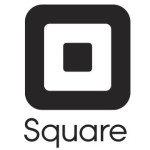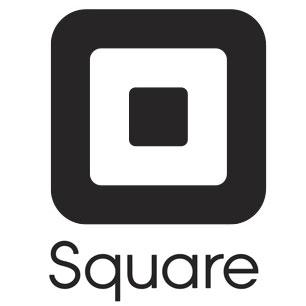Category: Internet Equity Research
Square Payments – Helping Companies Get Squared Away
 Square (NYSE: SQ), a mobile payment and financial services company, is another new addition to our Internet sector coverage. Founded in February 2009 by Jack Dorsey and Jim McKelvey, Square is headquartered in San Francisco, California, and led by Chairman, CEO, and president Jack Dorsey, who also serves as CEO of publicly-traded Twitter (NYSE: TWTR), which he also co-founded. Consensus estimates call for revenue of $1.2 billion and a loss of $0.53, followed by a projected $1.5 billion in revenue for 2016, and a loss of $0.25 per share.
Square (NYSE: SQ), a mobile payment and financial services company, is another new addition to our Internet sector coverage. Founded in February 2009 by Jack Dorsey and Jim McKelvey, Square is headquartered in San Francisco, California, and led by Chairman, CEO, and president Jack Dorsey, who also serves as CEO of publicly-traded Twitter (NYSE: TWTR), which he also co-founded. Consensus estimates call for revenue of $1.2 billion and a loss of $0.53, followed by a projected $1.5 billion in revenue for 2016, and a loss of $0.25 per share.
Square debuted on the New York Stock Exchange on November 19, 2015 at a price of $9.00 per share, below its expected range of $11-13 per share, and well-below its most recent private financing round, which then valued the company at $15 per share. The offering featured 27 million shares, with 25.6 million coming from the company, and the remaining 1.4 million coming from shareholders. At a recent share price of $10.40, Square’s market cap is roughly $3.7 billion, the result of including dual share classes, in contrast to Twitter, which features only common stock, and not super-voting rights that disenfranchise common stock owners. Goldman Sachs, Morgan Stanley, and J.P. Morgan were lead book-running managers for the offering, all three of which led the Twitter IPO. Barclays, Deutsche Bank, Jefferies, RBC Capital, and Stifel as book-running managers, and LOYAL3 and SMBC Nikko as co-managers, rounded out the members of the underwriting group.
Square’s mission is to enable everyone with a mobile device to accept credit and debit cards anytime and anywhere. Square’s products help their customers, or sellers, begin, manage, and grow their companies. Sellers can see which of their products are selling the most and create and engage a loyal base of customers. The technology and design focus that Square employs helps them create simple and easy to use products.
Square’s top product is Square Register, which allows sellers to accept offline credit and debit cards on their smart phones and tablets. This product works in tandem with Square Reader, which is the device that the credit and debit cards are swiped onto. Square Reader plugs into the audio jack of smart phones and tablets. These were Square’s first two products. Square provides a free software app, along with affordable—often free—hardware to make smart phones and tablets point of sale solutions in mere minutes. While the vast majority of Square’s revenue comes from the United States, its products are also available in Canada and Japan.
While Square initially targeted small companies, it currently is aiming at businesses of all sizes. Square’s services are applicable to every type and size of business, ranging from taxi cabs to restaurants to law firms to landscaping companies to retail stores. Post-IPO, Square has a strong balance sheet, with well over $300 million in cash and no debt, though it is unclear at this juncture how long the company will have the luxury to operate at substantial losses and begin to deplete its cash position. To learn more about how Square ranks relative to other internet IPOs of the last several years, please contact Battle Road Research.
Alarm.com
 Alarm.com (NASDAQ: ALRM), a cloud-based security systems provider is among the recent additions to our Battle Road IPO Review Software sector coverage. Founded in 2000 as part of a research and development unit within MicroStrategy (NASDAQ: MSTR), a provider of business intelligence software, Alarm.com was later spun off from MSTR. Alarm.com is headquartered in Vienna, Virginia, and its CEO and president is Steve Trundle. Consensus estimates call for EPS of $0.14 in 2015, flat with $0.14 in 2014, while revenues are projected to increase by 16 percent in 2015 to $194 million.
Alarm.com (NASDAQ: ALRM), a cloud-based security systems provider is among the recent additions to our Battle Road IPO Review Software sector coverage. Founded in 2000 as part of a research and development unit within MicroStrategy (NASDAQ: MSTR), a provider of business intelligence software, Alarm.com was later spun off from MSTR. Alarm.com is headquartered in Vienna, Virginia, and its CEO and president is Steve Trundle. Consensus estimates call for EPS of $0.14 in 2015, flat with $0.14 in 2014, while revenues are projected to increase by 16 percent in 2015 to $194 million.
Alarm.com debuted on the NASDAQ on June 26, 2015 at $14.00 per share. All proceeds from the seven million share offering went to Alarm.com. Goldman Sachs, Credit Suisse and Merrill Lynch acted as book-running managers for the transaction, with Stifel, Raymond James, William Blair, and Imperial Capital acting as co-managers. At a recent share price of $14.00, the company’s market cap is roughly $635 million.
Alarm.com deploys wireless security systems that can be monitored using video, mobile apps, and web-based apps. In 2010, Alarm.com added to these systems by allowing users to control heating and cooling temperatures using these apps. With 2.3 million subscribers, 25 million connected sensors and devices, and 20 billion data points processed in the last year alone, Alarm.com claims to be the largest connected home platform. This platform has been built specifically for home and business security, with a network of more than 5,000 service providers, with expertise in design, sales, installation, and support for the platform.
The connected home platform designed by Alarm.com has four main segments: Interactive Security, Intelligent Automation, Video Monitoring, and Energy Management. Interactive Security is an always-on security system powered by cellular connection which can survive otherwise detrimental occurrences such as line cuts, power outages and network problems. Interactive Security includes app alerts and triggers and constant emergency response. Intelligent Automation allows users to connect and control security systems, garage doors, lights, locks, thermostats, electricity and other devices. Intelligent Automation learns patterns and recommends adjustments.
Video Monitoring allows for on-demand viewing of security footage which can be accessed at any time, including live streaming, video alerts, constant high definition recording and clip captures. Video Monitoring can be accessed through the web and mobile apps. Energy Management enables users to control energy usage and comfort and is connected to thermostats, power meters, lights, shades, solar panels and appliances. Energy Management controls devices and manages temperatures. Users can also obtain a real-time look into their energy usage and efficiency. The pricing for Alarm.com is a monthly fee starting at $13.99 for homes and $19.99 for businesses, with more features available for a higher cost. There is also an initial set-up fee.
The Alarm.com app, which can control the entire connected home platform, is available on the iPhone, iPad, Android, Windows Phone, Apple Watch, Pebble Watch, and Amazon Fire TV. This app is what brings the connected home platform together, allowing users access to their homes while out and about. Main competitors of Alarm.com include iControl, Frontpoint, Protect America, LiveWatch, Link Interactive, SimpliSafe, LifeShield, AlarmForce, ADT, and Vivint. Post-IPO, we note that Alarm.com has a solid balance sheet, with over $100 million in cash and net debt of just $7 million.


